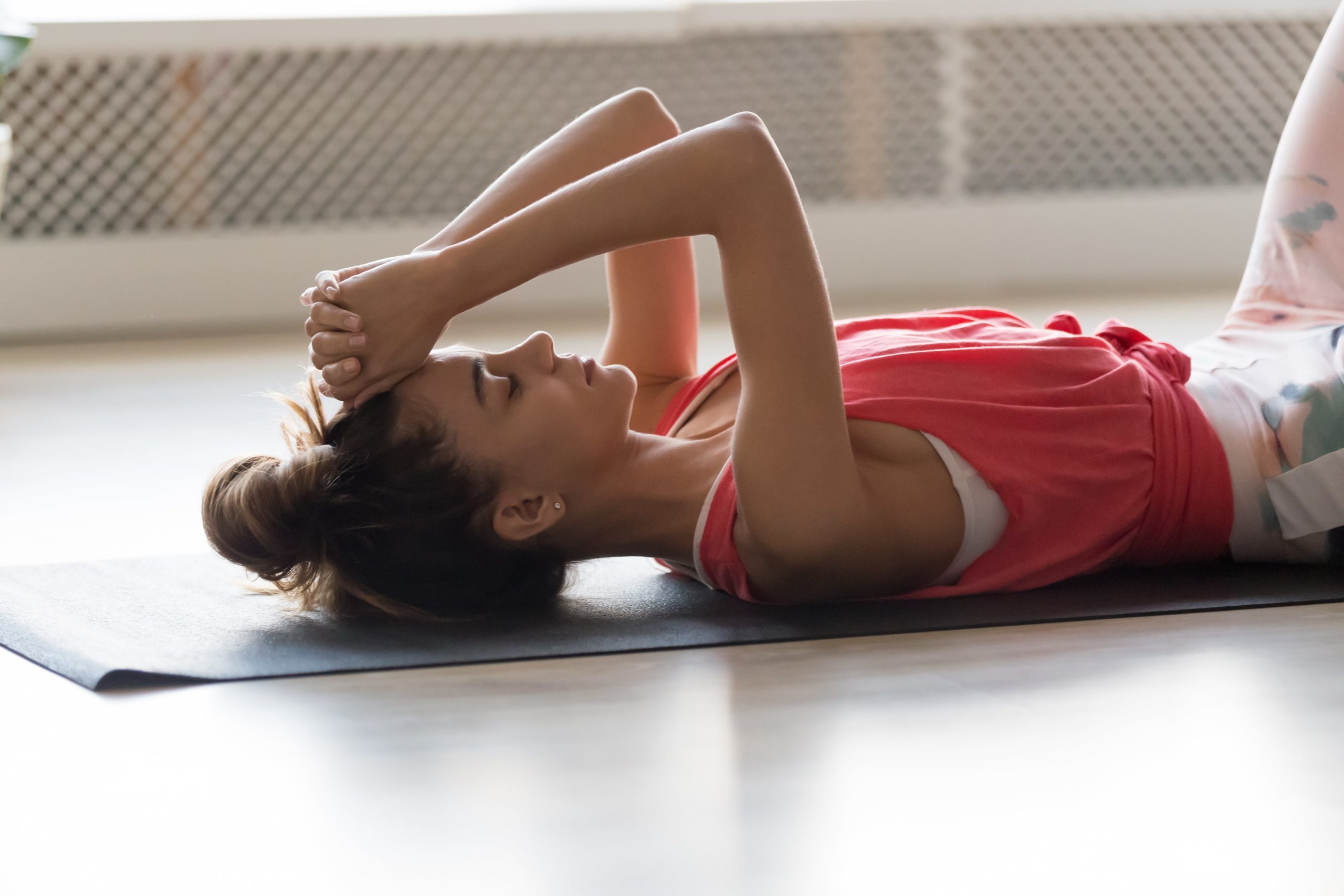Having a hard time falling asleep at night and muddling through midday fatigue, are common symptoms of most panic and anxiety disorders. We often find ourselves using caffeine to mask our exhaustion throughout the day, which then leads to feeling jittery and agitated at night. While our morning coffee may be a relaxing ritual, continuous coffee drinking past 11am or noon, is almost certain to affect our sleep patterns at night.
Breathing exercises may not be the first thing that comes to mind when we start to feel that midday slump, but they are a clinically-proven method for calming the nerves and recharging our energy during the day in a way that won’t prevent us from getting a good night’s rest in the evening.

Breathing Exercises for Powering Up
The way we breathe can greatly impact our energy levels. Breathing is an automatic function. We don’t typically think about breathing throughout the day. Studies show that 50% of adults are “chest-breathers,” which means that most of us, as we go about our daily routine, are in the habit of shallow breathing that doesn’t deliver as much oxygen as our cells are capable of receiving. Did you realize that our cells convert 70% of the oxygen we into energy? When we take deep intentional breaths from our abdomen, we succeed in balancing the levels of oxygen and carbon dioxide in our blood. This balance is vital for boosted energy levels and mental alertness.
What can we do to quickly recharge our energy during our busy day that doesn’t interfere with the task at hand? Energy-reviving breathing exercises are often at their best when they can be done quickly and from anywhere. Let’s take a look at a couple quick breathing practices that will flush your system with much needed oxygen levels, and boost your energy while on the go.
The One-Minute Breathing Exercise:
- Start by sitting comfortably and just noticing your natural breath as it is right now. Close your eyes if it helps you relax.
- Intentionally slow your breath down and send your exhale deep into your belly.
- Inhale through the nose for a count of five.
- Exhale through the mouth for a count of five.
- Repeating steps 3 and 4 for a minimum of 6x will take one minute to complete. As you get more experienced, or when you have a bit more time, extend your repetitions up to 30X which only takes 5 minutes to complete.
This is an excellent energy breathing exercise for people who are just beginning, and for those who want a quick pick-me-up that won’t distract from a busy schedule.
The Breath of Fire Exercise:
If you have five minutes to yourself, and you want to try something more advanced, try Breath of Fire! This is a yogic breathing exercise that really gets the energy flowing. It involves completely emptying your lungs of all stagnant air and vigorously replacing it with a fresh oxygen-rich supply. Anyone can do it, but a guided video may help to familiarize yourself with this practice.
Breath of Fire exercise: https://www.youtube.com/watch?v=aT74nms0SBo
Breathing Exercises for Powering Down
We all know sleep is important, but for those of us with panic and anxiety disorders, getting a good night’s sleep isn’t always as easy as flipping off the light switch. In the same way that shallow breathing and depleted oxygen levels rob us of much needed energy during the day, it also triggers the release of stress hormones, like cortisol and adrenaline, that disrupt our ability to wind down at night. Deep intentional breathing balances out stress hormones by releasing feel-good hormones, like dopamine and serotonin, that promote a restful night’s sleep. Let’s look at a couple power down breathing exercises that will help you drift off to dreamland.
The Gratitude List Breathing Exercise
Advanced MRI technology has revealed that gratitude is the MOST effective way to access the reward center of your brain. When we stimulate the reward center of our brains, our bodies release dopamine and serotonin into our systems, and balances out the hormones which cause feelings of panic and anxiety that keep us lying awake way past our bedtime.
- Get into a relaxing position in bed, and close your eyes.
- Take a slow deep inhale while thinking to yourself the mantra “I am grateful”
- Exhale slowly and completely while thinking to yourself about something you are grateful for. Anything great or small.
Example:
*Inhale* “I am grateful…”
*Exhale* “…for a comfortable bed.”
*Inhale* “I am grateful…”
*Exhale* “…for my health.”
- Repeat step 2 and 3 for 10x or more and be gentle with yourself. There is no gratitude too small to be mentioned.
Developing this practice can also have benefits that extend way beyond just a good night’s sleep. There have been many research studies linking gratitude with getting better sleep, lowering blood pressure, improving relationships and alleviating pains and anxiety. To read more, check out “How Gratitude Helps You Sleep at Night.”

The 4-7-8 Breathing Exercise
The 4-7-8 Breathing exercise is designed to bring your awareness to your breath and keep your focus on relaxing instead of stressing.
- Sit with your back straight, or lay down with some sort of support under your knees such as a pillow.
- Place the tip or your tongue behind your upper front teeth and hold it there throughout the exercise.
- Exhale heavily through the mouth making a “whooshing” sound.
- Close your mouth and inhale through your nose for a count of four.
- Hold this breath gently for the count of seven.
- Exhale with the same heavy whooshing sound for a count of eight.
- Repeat 3-6 4x being sure to keep the tip of your tongue positioned at the back of your upper teeth. It is also important to inhale silently through the nose, and exhale with a whooshing sound through the mouth.
For breathing exercises that require such specificity, it really helps to use a guided video for the first few times. Try this one, by the founder of the technique, Dr. Andrew Weil, to get you started: https://www.youtube.com/watch?v=gz4G31\LGyog
Keep in mind while using these techniques, that breathing exercises have an accumulative effect. The more consistently you use them, the more effective they become. Thank you so much for reviewing these methods for creating energy and supporting your sleep patterns. Give yourself credit for being willing to do things differently, because this is how we get different results!



